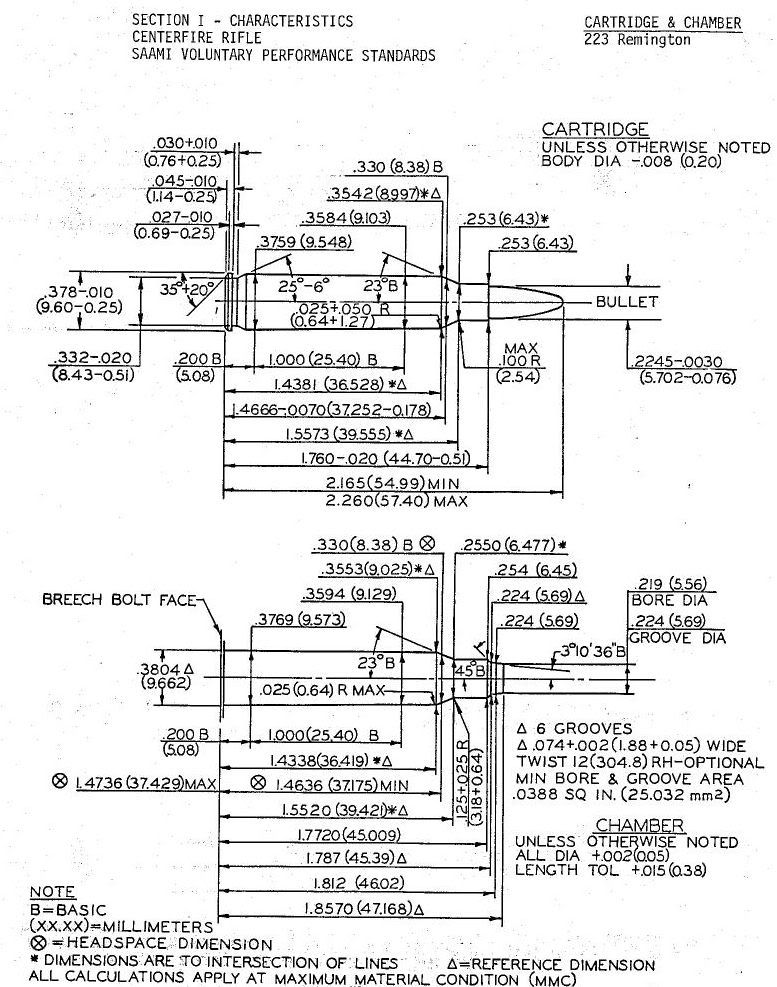Re: Why is .223 headspace in 10,000ths?
Remington registered the drawing with SAAMI.
It says the chamber should be between 1.4636 and 1.4736", = a .0100" range.
It says the cartridge should be between 1.4596 and 1.4666", = a .0070" range.
There is .0030" of overlap.
I have a Ruger #1V 223 that is .003" more headspace than minumum.
I have a Bushmaster V-match 223 that is .008" more headspace than minimum.
I have a Colt AR15 223 that is .005" more headspace than minimum.
I have a Wilson AR15 223 that is .0065" more headspace than minimum.
I have a Mauser 223 [that I cut the chamber] that is .008" more headpace than minimum.
I try to keep brass that comes out of a rifle to stay with that rifle.
That way the brass from the bolt action and falling block get neck sized and the brass from the AR15s gets full length resized with the die adjusted to push the shoulder back to .001" clearance in the chamber.
I don't have a sizer die associated with every AR15 [maybe I should], so I have to adjust it nearly every time I use it, so some brass gets sized wrong while I am adjusting it.
What does it all mean?
For handloading, it does not matter what SAAMI says, what matters is what your rifle is.




